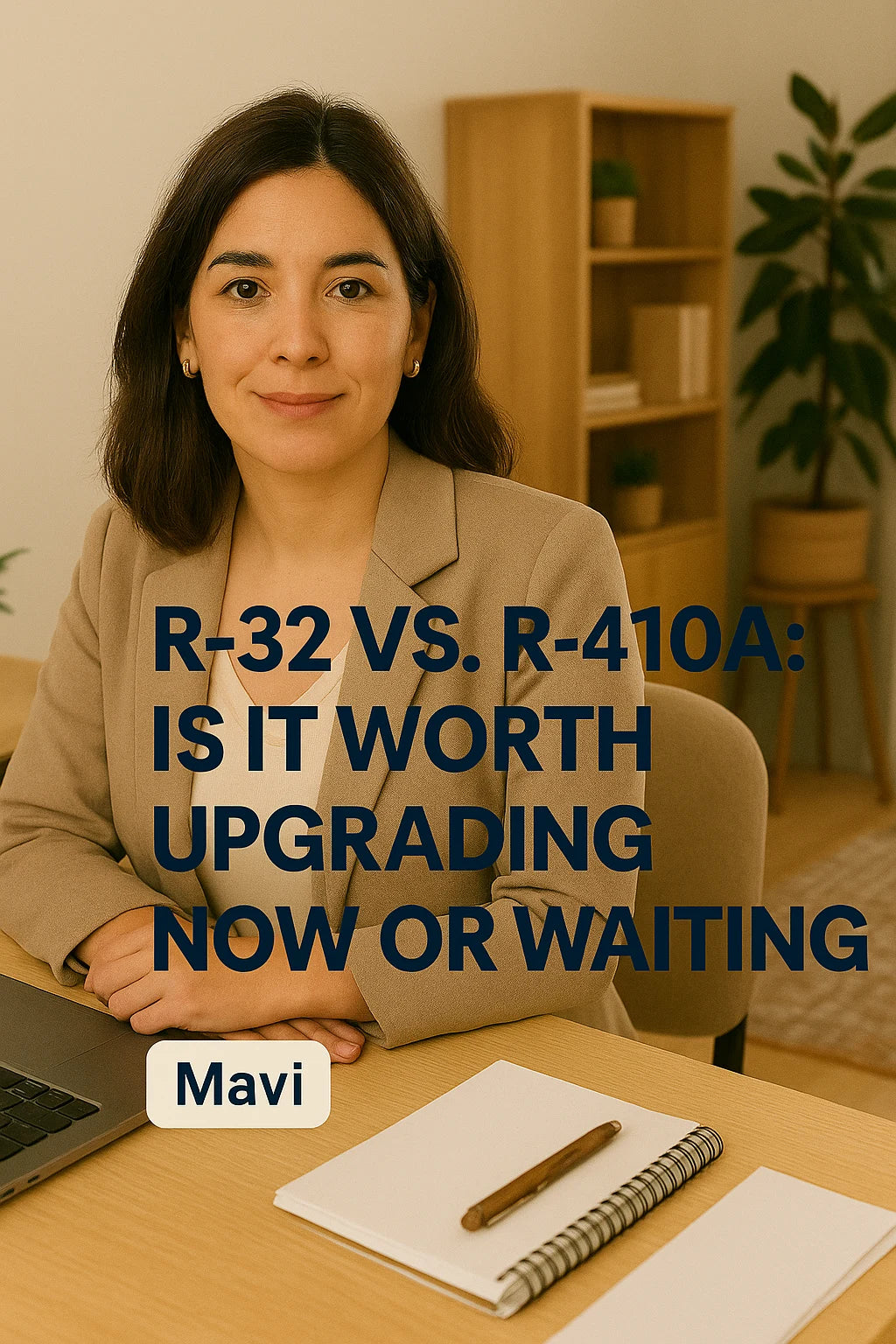🕰️ The Timing Dilemma Facing Homeowners
As the HVAC industry shifts away from R-410A, many homeowners are asking: Should I upgrade to an R-32 system now or wait? This guide will break down the key considerations, costs, and future implications to help you make a smart decision.
🌎 Why Is R-410A Being Phased Out?
R-410A has been the dominant refrigerant for over two decades but contributes heavily to global warming.
| Refrigerant | Global Warming Potential (GWP) |
|---|---|
| R-410A | 2088 |
| R-32 | 675 |
The EPA's AIM Act mandates a step-down of high-GWP refrigerants to comply with the global Kigali Amendment.
🗓️ Current and Future Phase-Down Schedule
| Year | Action |
| 2025 | Major reduction in HFC production & imports |
| 2026-2028 | OEMs shift heavily to R-32 and other alternatives |
| 2030 | R-410A new equipment production sharply restricted |
| 2036+ | Full HFC phase-down enforcement |
EPA official phase-down schedule details the regulatory timeline.
💸 Cost of R-32 vs. R-410A Systems in 2025
| System Type | Installed Cost Range |
| New R-32 2 Ton System | $4,500 - $7,500 |
| Remaining R-410A Inventory | $4,000 - $7,000 (while supplies last) |
⚠️ Watch for Hidden Costs
-
Scarcity of R-410A parts in the future
-
Rising cost of R-410A refrigerant (market pressures)
-
Potential resale devaluation of R-410A homes
🏠 Resale Value Implications
Real estate buyers are increasingly aware of HVAC system efficiency and environmental standards. An outdated R-410A system may:
-
Require replacement as a condition of sale
-
Lower appraisal value
-
Appeal less to eco-conscious buyers
According to Zillow research, homes with upgraded HVAC often sell faster and at a premium.
🔧 Long-Term Serviceability Concerns
| Factor | R-410A | R-32 |
| Availability of Refrigerant | Shrinking | Abundant |
| Cost of Repairs | Increasing | Stable |
| Contractor Training | Declining | Growing |
| Replacement Parts | Becoming scarce | Expanding inventory |
📈 Efficiency Gains with R-32
| Metric | R-410A | R-32 |
| Heat Transfer Efficiency | Lower | Higher |
| Charge Requirements | Higher | 20-30% lower |
| SEER2 Ratings | Lower ceiling | Up to 18+ SEER2 achievable |
| Energy Consumption | Higher | Reduced |
🧯 Safety Differences: Mild Flammability Concerns
R-32’s A2L classification reflects its mildly flammable nature. However:
-
Residential systems include multiple safety safeguards
-
ASHRAE standards outline safe handling protocols
-
Manufacturers design systems for leak containment
The ASHRAE Standard 34 provides refrigerant safety classifications.
🤔 So, Should You Upgrade Now?
✅ Reasons to Upgrade Now
-
Current system aging or failing
-
Qualify for tax credits & rebates
-
Higher resale value potential
-
Lock in lower refrigerant and parts costs
-
Environmentally responsible decision
❌ Reasons to Wait
-
Recently installed R-410A system in good condition
-
Budget constraints
-
Plan to sell home soon without upgrading HVAC
🎯 Tax Credits and Incentives for Early Adopters
The Inflation Reduction Act (IRA) offers generous tax incentives for high-efficiency upgrades:
-
Up to $2,000 federal tax credit
-
Local utility rebates
-
State-level incentives
Use the DSIRE database to explore all available rebates and tax credits.
📣 Final Verdict: Early Adoption Has Advantages
| Situation | Recommendation |
| Existing system 10+ years old | Upgrade to R-32 |
| Frequent repair history | Upgrade |
| Financially ready | Upgrade |
| Newer R-410A system | Monitor but defer |
| Home sale imminent | Case-by-case |
For most homeowners facing replacement, upgrading to an R-32 system now provides long-term benefits in cost savings, comfort, resale value, and environmental stewardship.
In the next topic we will read about: What Does a 2 Ton R-32 AC Installation Cost in 2025?







